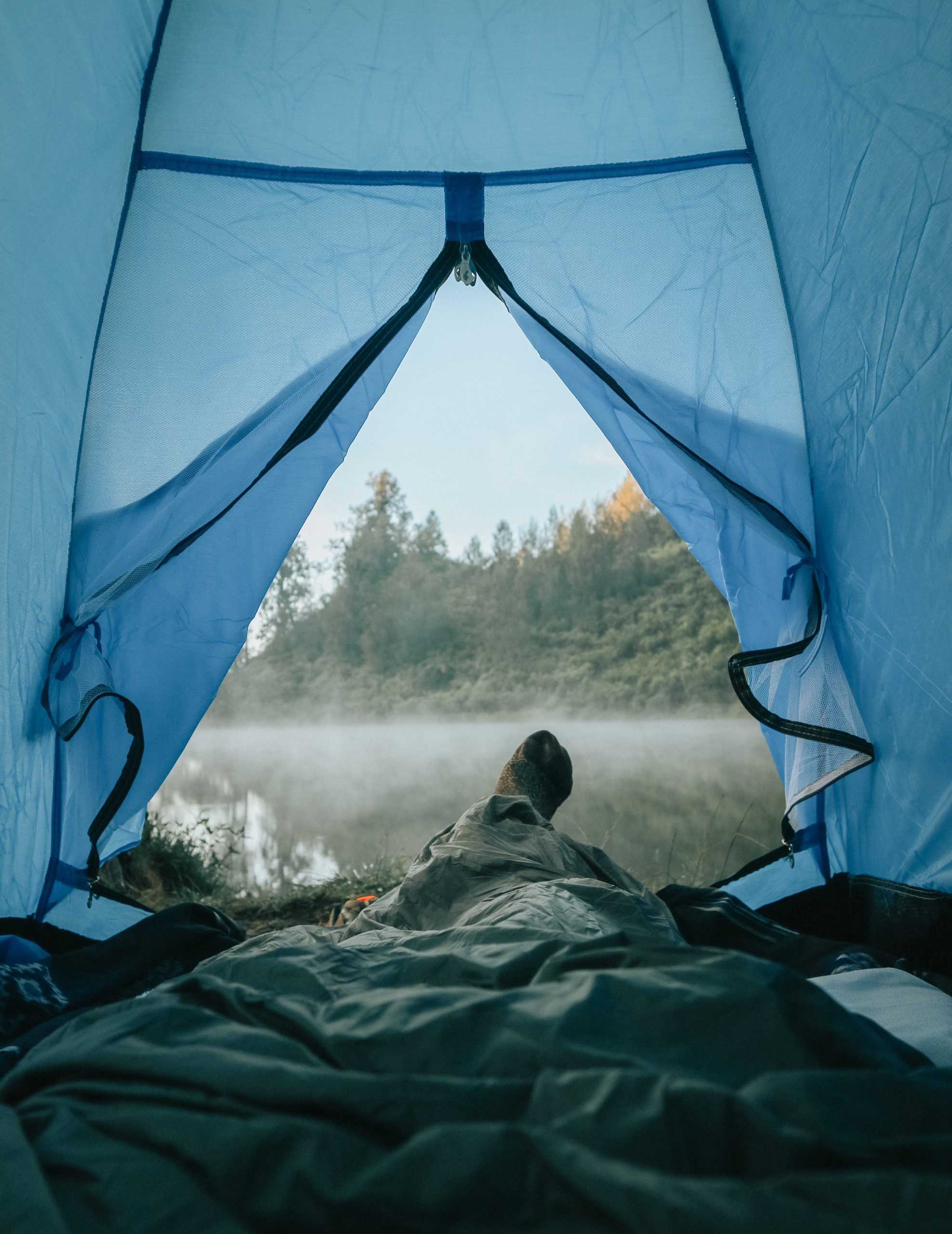Enjoying the Outdoors Naturally: Making your backyard a NO-FLY zone
Enjoying the Outdoors Naturally: Making your backyard a NO-FLY zone
When summer gets going, the high-pitched “hummm” of mosquitoes in the yard or nearby woods is all we need to hurry inside when dusk comes. But this is YOUR property, right? There are many ways to take it back…some healthy and some not so healthy. On the latter side, I know the smell of Malathion by heart, even though my mother told my sister and I to get inside immediately when we heard the drone of the fogging truck coming up our wooded lane. Later I heard stories from baby boomers who as children went out to play behind the truck in the fog as it buzzed down the streets of New Orleans. With the advent of west Nile and Zika viruses in the US, mosquitoes are still quite a serious concern, but knowing that Malathion can cause mutated genes in blood cells, breast cancer, abnormalities in sperm, and increased Non-Hodgkin’s Lymphoma among farmers that use it, among other effects, Malathion might be the greater danger!
Similarly, many of the outdoor sprays, including the most popular Permethrin in the US, have active ingredients in the class of pyrethroids. While pyrethroids are safer to us when dry (up to 2 hours later), they can be absorbed through skin while applying them, or drift into our homes through open windows or crevices (such as when an exhaust fan is being used inside the house, pulling in outside air). Pyrethroids are a synthetic version of pyrethrins, which are extracts from the chrysanthemum plant. Pyrethroids are possible carcinogens, endocrine disruptors, and nervous and respiratory system toxins.
Several years ago, I was gifted a newer mosquito “lamp” called the Thermacell. It works by heating up a small pad saturated in Allethrin (a pyrethroid), that creates a vaporous barrier of about 15x15 feet around you. It takes a few minutes (10-15) to fully establish the chemical barrier. Although it works, the product warnings include keeping it away from uncovered food and to avoid directly inhaling the vapors. Huh? In order to be effective, you are sitting in the 15x15 area…directly or indirectly inhaling the vapors. (?!)
I hope you enjoyed our post on mosquito repellents where I discussed the products you spray on your body. In this war on mosquitoes and other pests, there are repellents safer than Malathion and pyrethroids that you can deploy on your yard. Here are the best of what we found!
Similar to the way a “wireless fence” works to keep pets in the yard, what if there was a way to keep insect pests out of the yard? There is! For those who dream of Star Wars technology in the home, Photonic Fence is an insect-killing laser device that tracks mosquitoes and other potential pests using cameras and computers, then kills them with a “minimum lethal dose” laser. The “Photonic Fence is capable of finely discriminating between different species of insects, and so can be relied upon to target only harmful insects, rather than beneficial insects.” (photonicsentry.com) Unfortunately it is only available by inquiry at the moment…
On the more realistic (and safer) side, the first thing to do is make your backyard inhospitable to mosquitoes through these strategies:
- Get rid of standing water. If you have a fish pond, make sure there is not algae growing in it, because this is a favorite food for mosquito larvae. Be aware that container plants need to have adequate drainage, too, otherwise mosquito larvae can grow in water in the pots. Also, refill bird baths and dog bowls frequently to discourage mosquitoes. A frequently overlooked spot is the AC unit, which usually has a pan with drain holes under it. If the drain holes get clogged with leaves and debris, voila! You have a mosquito incubator.
- Install fans around your favorite gathering places. Mosquitoes are slow, weak fliers that can’t stand up against strong breezes. It also disperses the carbon dioxide we breathe out, which is a way that mosquitoes target us.
- Install netting or screen around your favorite hangout: a porch, gazebo, or screened tent.
- Wear light colored clothing, because mosquitoes “see” dark colors more easily.
- If fleas are your main problem, be aware that fleas breed in backyards before hitching a ride on pets or us. So, you can unleash a natural predator like beneficial nematodes on them, that will destroy them and their eggs within about 2 weeks. Here is an excellent article on how to deploy these microscopic worms to demolish fleas in your backyard.
- For the science geeks among us, try making a dry ice trap! These are actually used by scientists to count and examine species of mosquitoes. You’ll want to use this at the farthest point from any gathering place, because it is a “bait”: mosquitoes are tricked into thinking that the CO2 is from a prey source, so you don’t want it near you!
Now that you’ve done your best to put up a “NO VACANCY” sign, here are the safer outdoor pesticides which can be sprayed manually or automatically around your yard to discourage or kill mosquitoes and other pests. These stand out by using natural ingredients for great results:
- We touted Wondercide in our post about indoor pesticides (Why You Should Get Rid of Raid!) and they have an excellent outdoor pesticide as well. Wondercide built their business on being friendly to pets and families. Their outdoor products come in a formulation that repels fleas and ticks (that also work on mosquitoes), or, if you don’t have pets that attract fleas and ticks, a formulation that primarily kills mosquitoes but also works on ants and ticks.
- Nature-cide Outdoor Insect Repellent is a great choice with no toxic ingredients. The active ingredients are cedarwood oil and cinnamon oil, with carriers lecithin, soap and water. It deters Ants, Bed Bugs, Caterpillars, Cockroaches, Earwigs, Fleas, Flies, Hornets, Mites, Mosquitoes, Moths, Silverfish, Spiders, Stink Bugs, Ticks, and Wasps. It is available in a 32 oz spray bottle (perfect for small areas) or larger sizes.
- Mosquito Barrier by Garlic Research Labs, Inc. is 99.3% garlic juice, with the remainder citric acid and potassium sorbate. When it is diluted in water as per instructions, it kills adult mosquitoes, coats plants to deter mosquitoes, and suffocates mosquito larvae in standing water. It also repels fleas, ticks and ants, a great combination for pet owners.
The following two treatments have ingredients that are a lot safer than pyrethroids, but one carrier ingredient that can be questionable (sodium laureth sulfate). Sodium laureth sulfate is a surfactant which helps the treatment spread out and stick to plants. Depending on how it is manufactured, sodium laureth sulfate may be contaminated with measurable amounts of ethylene oxide and 1,4-dioxane, a known carcinogen and a possible carcinogen (davidsuzuki.org).
- Pyranha® Zero-Bite® Natural Insect Repellent by Bug Armour: according to the label, the ingredients are 6% Geraniol (oil derived from geraniums), Clove oil and Peppermint oil, 7% Sodium Laureth Sulfate, 13% water and glycerin.
- Naprovit PRO Plus™ by Natural Misting Solutions “controls mosquitoes, spiders, wasps, hornets, midges (No-see-ums), gnats, and many other types of small flying insects when used in residential and commercial misting systems.” It contains 8% Sodium Laureth Sulfate, 2% soybean oil and 1% corn oil (the rest is water and soap). It kills insects on contact, including wasps and hornets; however I could find no information on its effect on honeybees.
There you have it–let us know what other outdoor strategies have helped you enjoy your little slice of heaven!
Photo by Randy Fath on Unsplash



